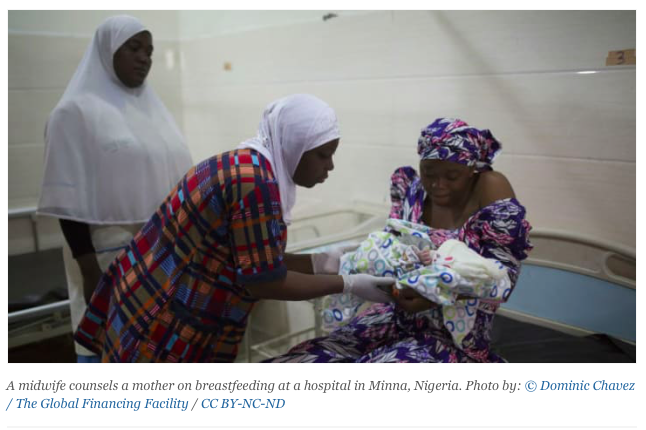How to address the midwife challenges threatening maternal care
 VANCOUVER — Gender-based violence, poor salaries, and staff shortages are demotivating midwives and jeopardizing the quality of maternal care.
VANCOUVER — Gender-based violence, poor salaries, and staff shortages are demotivating midwives and jeopardizing the quality of maternal care.
“How can you be really compassionate when you're not being treated compassionately?” asked Franka Cadée, midwife and president of the International Confederation of Midwives on the sidelines of this week’s Women Deliver conference. Adding that compassion fatigue is a big issue, Cadée said: “Midwives really suffer all kinds of gender issues, are abused, and have low pay so it's really hard to keep them motivated.”
According to the 2016 “Midwives' Voices, Midwives’ Realities” report, 20% of midwives have to look for other means of income on top of their full-time midwifery jobs, 37% of midwives have experienced harassment, and 30% working in Africa deal with poor management due to insufficient staffing.
“A lot of it comes down to gender,” said Cadée. “We’re women, working with women, doing women's things, so it's like a triple whammy.” Twenty to thirty percent of midwives believe they are treated poorly because of their gender.
On midwives and community health workers
► The midwives at the forefront of the birthing crisis in Cox's Bazar
► Meet the women providing maternity care amid conflict
Pay inequality is one such example. “For all women in the global health workforce, even beyond nursing and midwifery, we’re seeing extreme challenges in terms of gender equity. There are differences in terms of the wage gaps,” said Joy Marini, global director of insights at Johnson & Johnson Global Community Impact, in a Facebook Live with Devex.
Unlike other sectors, nurses and midwives cannot go on strike to protest because of the lives at risk.
Jane Wanyama, CEO of the Aga Khan Hospital in Kenya, said most health care institutions don’t have a pay structure and, if they do, it’s low, forcing many nurses to “moonlight.” “Maybe by the time they get to their place of work they’re tired, stressed, fatigued, and that becomes a problem in delivering quality of care,” Wanyama said.
Wanyama called on hospital managers, policymakers, and other budgeting bodies, to put aside the right amount of funds to create an enabling environment for midwives.
Overcoming challenges
Strong leadership, not just among organizations but as individuals within the health community, is one way to tackle these topline issues, Cadée said. “Stand with midwives, say that midwifery matters, walk the talk.”
But midwives also have their own power and need to realize that leadership is not just leading an organization, she added. “It works well when midwives come together and know that when they're together they're strong — get midwives at the table so that they're part of the discussion.”
Having people outside the profession speaking up for midwives, as well as midwives themselves advocating for their causes, has a big impact in addressing some of the issues, added Cadée. “Midwives have plenty of power, just don’t take it away from them and let them speak up. Sometimes they might say things you don’t like and that’s how it is, that’s what power means. But we also need others to speak for us.”
Wanyama called for ICM to come down to a more national level rather than international level to understand the challenges their midwives face on the ground and better empower them. “When you have such bodies standing with the midwives then together they can do a lot.”
In terms of advocacy, the private sector has a strength that can be used to help, Marini said. “We can already feel that women are coming to the forefront and there’s much more global attention to the importance that midwives play in global health. We have to keep that gas pedal down and I think the private sector can be a partner in that.”
For example, Johnson & Johnson, along with ICM, advocates for and supports leadership programs that empower young midwives with the necessary skills.
Marini added that by choosing to support midwives in fragile and conflict-affected states or indigenous communities, the private sector can also help to tackle capacity issues subsequently improving the quality of maternal care. While organizations may see these groups as too small, too unique, or not worth the investment, we won’t reach the Sustainable Development Goals without addressing these populations, she said.
Cadée also acknowledged the role of technology in allowing midwives to focus on providing care while using digital tools as a support to address capacity issues. “You do see midwives using all kinds of different things to try to make the best use of their time.”
By: Rebecca Root
Source: https://www.devex.com/news/how-to-address-the-midwife-challenges-threatening-maternal-care-95058









